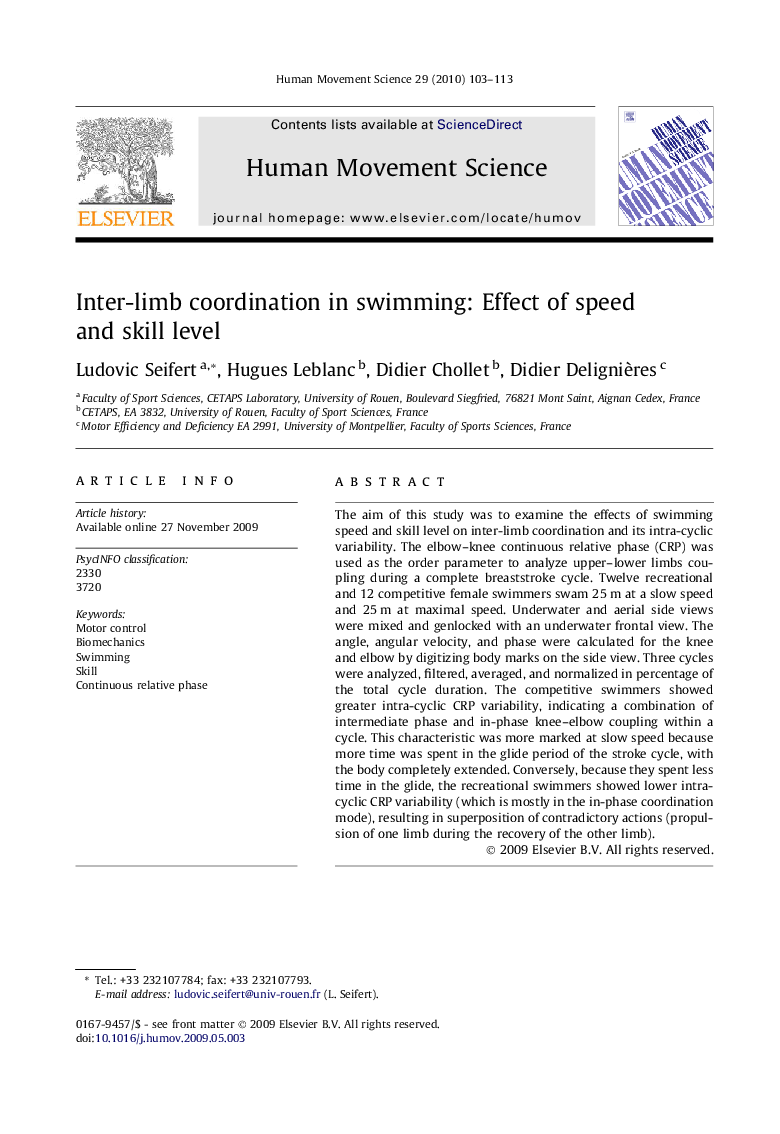| Article ID | Journal | Published Year | Pages | File Type |
|---|---|---|---|---|
| 928744 | Human Movement Science | 2010 | 11 Pages |
The aim of this study was to examine the effects of swimming speed and skill level on inter-limb coordination and its intra-cyclic variability. The elbow–knee continuous relative phase (CRP) was used as the order parameter to analyze upper–lower limbs coupling during a complete breaststroke cycle. Twelve recreational and 12 competitive female swimmers swam 25 m at a slow speed and 25 m at maximal speed. Underwater and aerial side views were mixed and genlocked with an underwater frontal view. The angle, angular velocity, and phase were calculated for the knee and elbow by digitizing body marks on the side view. Three cycles were analyzed, filtered, averaged, and normalized in percentage of the total cycle duration. The competitive swimmers showed greater intra-cyclic CRP variability, indicating a combination of intermediate phase and in-phase knee–elbow coupling within a cycle. This characteristic was more marked at slow speed because more time was spent in the glide period of the stroke cycle, with the body completely extended. Conversely, because they spent less time in the glide, the recreational swimmers showed lower intra-cyclic CRP variability (which is mostly in the in-phase coordination mode), resulting in superposition of contradictory actions (propulsion of one limb during the recovery of the other limb).
